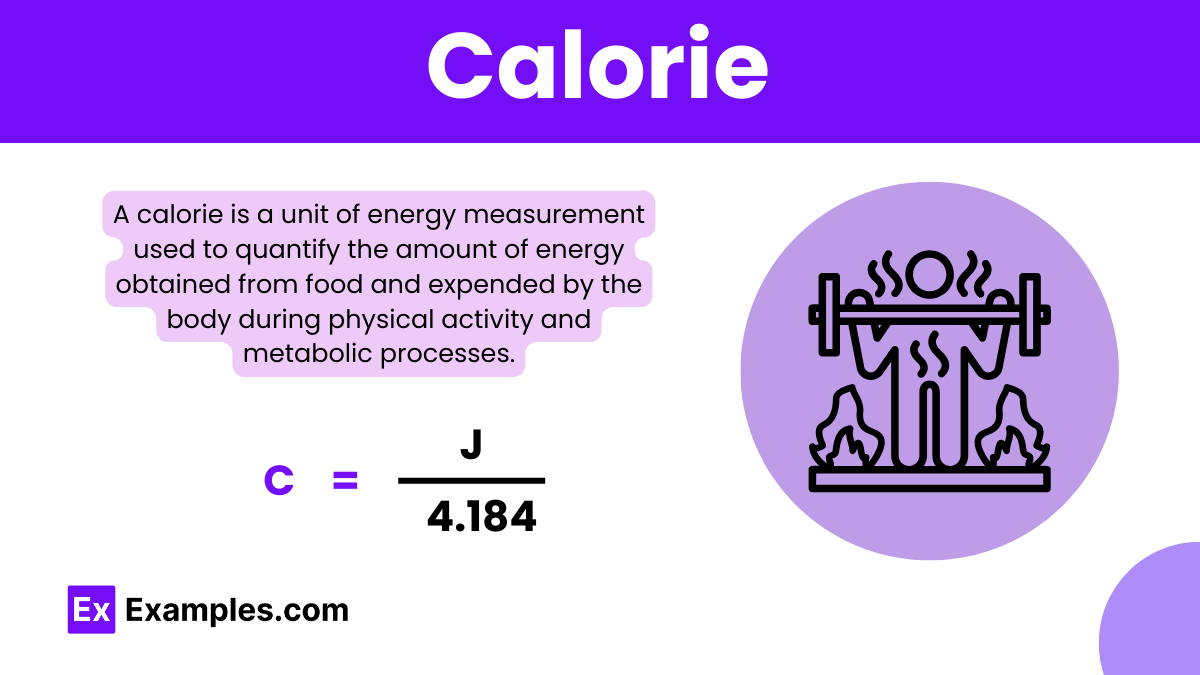What is the definition of a calorie?
The amount of heat needed to raise the temperature of 1 gram of water by 1 degree Celsius
The amount of heat needed to raise the temperature of 1 kilogram of water by 1 degree Celsius
The amount of heat needed to raise the temperature of 1 gram of water by 10 degrees Celsius
The amount of heat needed to raise the temperature of 1 liter of water by 1 degree Celsius





